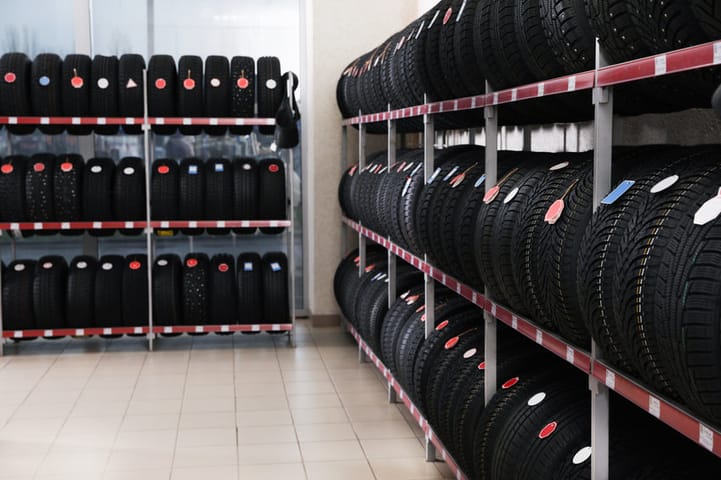Tire Replacement: The Art of Choosing the Right Tire Dimension
Selecting the proper tire dimension is a crucial facet of maintaining optimum efficiency and safety for your car. The detailed procedure of picking the ideal tire dimension entails greater than simply an arbitrary choice from a list of options. It requires a thoughtful consideration of numerous variables that can considerably influence your driving experience. From recognizing how tire dimension specifications are determined to identifying the impacts of wrong sizes on your car's handling and efficiency, the journey to discovering the excellent tire size is a nuanced one. Stay tuned to untangle the intricacies and subtleties of tire replacement, as we discover the art of making the appropriate option for your automobile.
Significance of Correct Tire Dimension
Choosing the suitable tire size is vital for making sure ideal performance, security, and effectiveness of your lorry. One of the essential reasons why tire size matters is since it influences the overall handling of your car. In terms of safety and security, having the proper tire dimension makes sure that your vehicle can properly grip the roadway, brake successfully, and maneuver efficiently to avoid mishaps.
Elements Influencing Tire Size Choice
A necessary factor to consider in establishing the appropriate tire dimension for your vehicle is comprehending the numerous aspects that affect this selection. One critical factor is the supplier's recommended tire dimension. This information can typically be discovered in the owner's manual or on a sticker label inside the driver's side door jamb. Differing the advised tire dimension can impact the speedometer accuracy, fuel efficiency, and total performance of the car.
If you regularly drive off-road or in tough weather condition conditions, you might need a tire with a different dimension or tread pattern contrasted to somebody who largely drives on freeways. The terrain you drive on likewise plays a function in identifying the optimal tire dimension.
Additionally, the size of your wheels can restrict the alternatives for tire dimensions. It's vital to make sure that the tires you choose work with your wheels to stop any type of safety and security threats or performance issues. By meticulously thinking about these factors, you can choose the right tire dimension that best matches your driving needs and automobile requirements.
Comprehending Tire Size Specifications
Tire size specifications offer crucial info concerning the measurements and qualities of a tire. Understanding these specs is important for picking the best tire for your vehicle. The tire dimension is typically displayed on the sidewall of the tire and is stood for by a mix of letters and numbers. For instance, a typical tire size specification can be P215/65R15. In this example, "P" signifies the tire kind, "215" stands for the tire width in millimeters, "65" is the aspect discover this proportion (the proportion of the tire's height to its size), and "15" suggests the size of the wheel in inches that the tire is developed to fit.
Furthermore, tire dimension specs may consist of lots index and speed score. The lots index indicates the maximum weight a tire can support, while the rate ranking represents the optimal rate capability of the tire. By understanding these specs, you can make certain that the tires you select my latest blog post are compatible with your lorry's needs and give optimal efficiency and safety and security when traveling.
Impacts of Incorrect Tire Dimension

Incorrect tire sizes can additionally impact gas performance. Making use of tires that are not matched for your lorry can change the speedometer analysis, bring about inaccurate gas mileage estimations. Dissimilar tire sizes can put added stress on the engine and transmission, possibly decreasing the overall fuel economy of the automobile.

Tips for Selecting the Right Tire Dimension
Choosing the appropriate tire size for your car is essential for making sure ideal performance and safety on the roadway. To assist in picking the right tire size, consider the following ideas. By adhering to these suggestions, you can choose the appropriate tire size to optimize your lorry's performance and safety.
Conclusion
In conclusion, have a peek here choosing the right tire size is crucial for making certain optimal efficiency and safety and security of an automobile. Elements such as vehicle type, driving conditions, and manufacturer recommendations have to be thought about when picking the ideal tire dimension. Inaccurate tire size can result in unfavorable impacts on handling, fuel performance, and overall safety and security. By comprehending tire size specs and complying with suggestions for choice, drivers can make enlightened choices to improve their driving experience.
From comprehending how tire size specs are established to acknowledging the effects of wrong sizes on your lorry's handling and effectiveness, the trip to locating the perfect tire size is a nuanced one.Tire size requirements give vital info regarding the dimensions and features of a tire. The tire size is generally displayed on the sidewall of the tire and is represented by a combination of numbers and letters. gmc tire service. In this example, "P" represents the tire type, "215" represents the tire width in millimeters, "65" is the element ratio (the ratio of the tire's elevation to its width), and "15" indicates the size of the wheel in inches that the tire is designed to fit
Tires that are too little might result in lowered security, especially during high-speed maneuvers, while large tires can create scrubing against the car's body elements, leading to prospective damages.